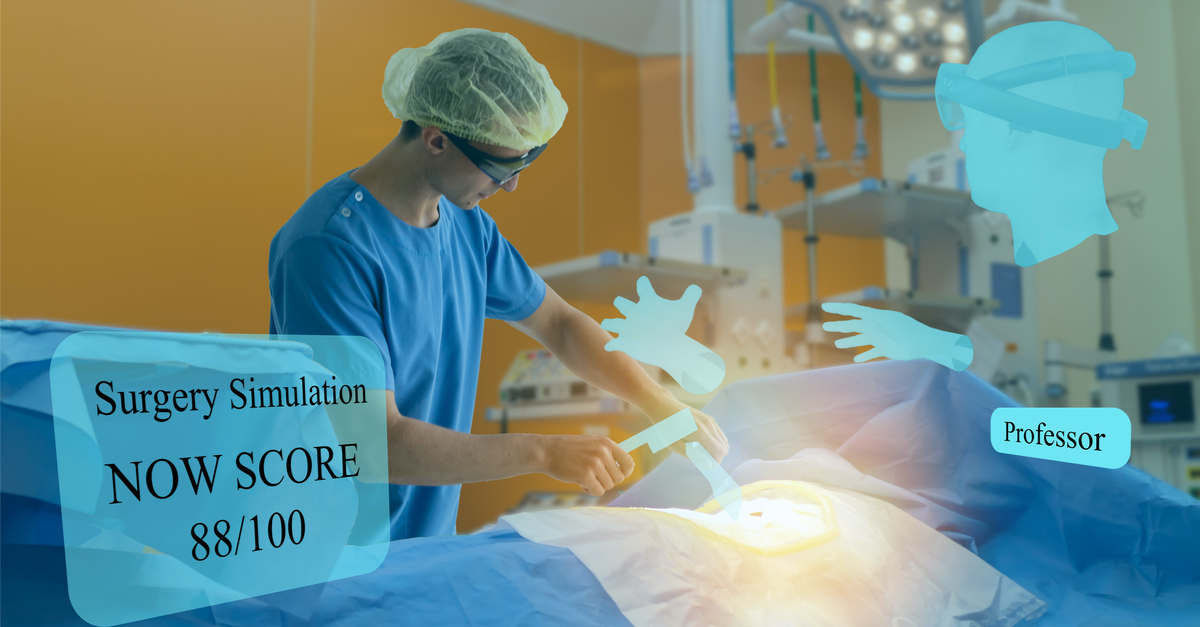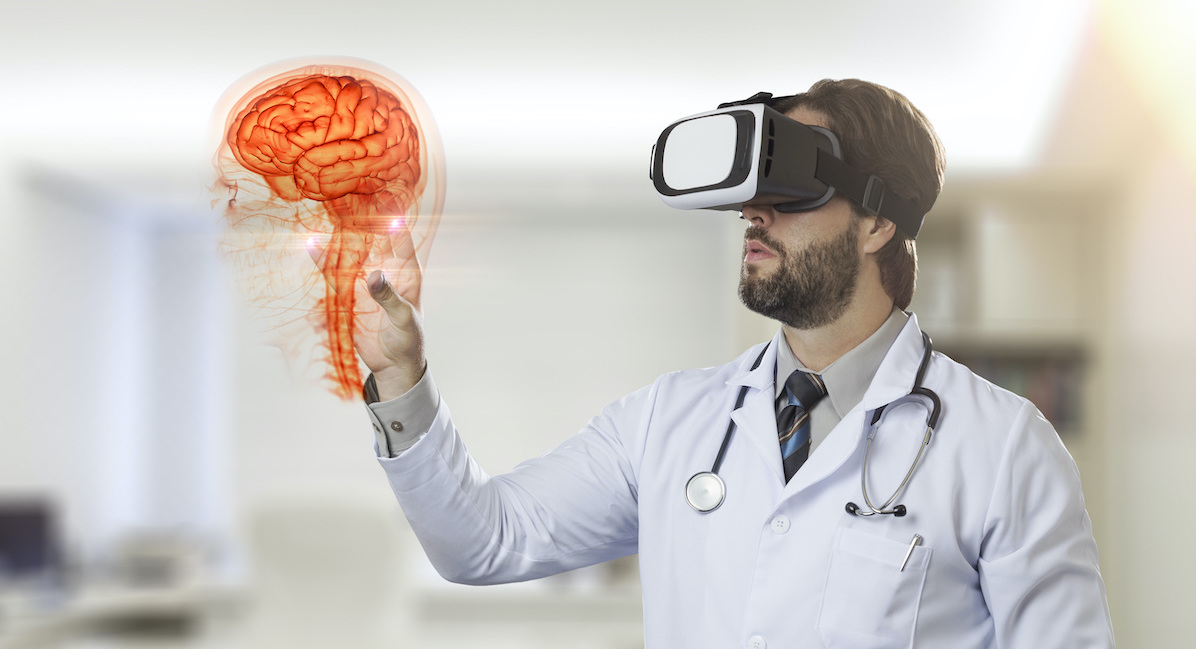As of today, virtual reality has long gone beyond the entertainment industry. The innovations are now used in various fields of life, including medicine. According to the forecasts that were made public by the IndustryARC company, the medicinal virtual reality technology market is going to amount to a fascinating $2.54 billion in the year 2020. It will be mostly used to rehabilitate patients or for the education of future doctors.
The developers are getting numerous requests everyday by clients who want to get their hands on “something with VR.” Usually, a long clarifying discussion follows the requests — the developers explain how the process of creating the technology goes exactly, which functions will it be able to perform, and which needs it will be able to fulfill on completion. To avoid all the hustle of alleviation of unawareness and save the specialists some time, maybe the clients should read about the possibilities of VR technology in medicine beforehand. With the help of this article, you are going to learn about the stage of evolution the technology is currently on, which directions for further development are the most popular, and what our company can do for our clients.
There are a lot of different technologies nowadays — 360 Video, 3DoF, 6DoF, Autonomous HMD, etc., and the abbreviations for them are — VR/AR/MR/XR. Let us look at them one by one.

360 Degrees Educational Video
Our company has been working on improving the educational 360 Video system for several years already. In the latest version of the product, we use three and more separate cameras that our clients can choose between, during the process. With the help of this technology, it is possible to train several different disciplines at once using all the various angles of shots of the same scenario.
For example, videos shot using this method can be used in the training process of surgeons, illustrating various operations in action. The same set of videos can be used to learn about the performance of specific activities, using some unique instruments for different manipulations. The only difference being the angle of the shot in each training task.
Creating such a video, we can implement various informational blocks and multiple-choice questions. This technology can become the most potent educational instrument with all the advantages of effective and practical experience. Several cameras, single operation, a few options for application, and we have a powerful tool to train future medical specialists!
Playback Device for 360 Video and Multiple-Angle Educational Video
Both options of 360 Video require appropriate equipment. It can be played in several ways, helping as many potential users as possible to gain full access to video-content. The easiest way to watch the video is by using a web browser that supports WebVR technology (which is almost every modern browser).
Using WebVR, a user can move around the video with their PC mouse or move their laptop or smartphone like a “window” into the content of the video. A user can also place their smartphone inside a particular device, allowing them to immerse even better. These devices are usually quite affordable (the prices typically don’t exceed the mark of $20).
The same experience can be transferred to an autonomous display using a headset (such as Oculus Go). You can also use individual controllers to make the immersion even better. This way, everyone can watch the 360 videos using their device just by accessing a web-browser.

What is DOF or «Degrees of Freedom»
As for the functionality of controllers and headsets, 3Dof and 6Dof are not just terms invented by users. 3DoF allows you to look around and see all your sides, up, and down. 6DoF has a similar effect but expands the abilities a notch. You can move the point of view from the side to side, up and down, forward and backward, and even walk the image you see in real-time.
We can use any free space as an example here. Let’s say; you are enjoying your dinner. The 3DoF system allows you to move your head and see what is going on around you. But you are not able to stretch your hand forward and grab the food in front of you. In most cases, you are likely to use a controller that is more like a laser pointer.
Whereas using a 6DoF controller (HTC Vive or Oculus Rift) and the corresponding headset is more like what you would experience moving freely in real life. You can rise from the table, step around your chair, walk around the table, climb over it, get the cookie, put it back on the plate, stretch your arm, touch any surface you see, etc. As you can already tell, this technology creates a full effect of presence.
Autonomous HMD
The main advantage of autonomous head-mounted displays is that they require no hosting device such as a computer or smartphone — they power themselves up. Currently, the leader position of this market is occupied by Oculus Go. Though the other players are also worthy of mentioning — its Vive Focus and Pico Neo, these headsets are more of the professional ones with rich functionality and numerous functions but are also a lot more expensive.
All the modern autonomous HMDs only have 3DoF controllers, but from the experience of many users, it is usually more than enough for qualitative interaction with the virtual reality environment. Training programs created based on HMD often use cognitive learning.
Through these interactions, healthcare users can be taught to choose the right medicines and instruct other characters to perform specific tasks. The interactions can be started and then played back based on the decisions of the user. Using 3DoF HMD with 3DoF controllers, most interactions are ambiguous and not reciprocal. It means that a user should perform a function based on how the patient’s body is positioned in space.

Even More VR
The leading players on the market of VR-devices are currently Oculus Rift and HTC Vive. For proper work of this machinery, you need to have a powerful PC. The overall price you will have to pay to make use of this technology, including the PC and Oculus or HTC Vive display, is going to be somewhat around 2000 dollars. Having all this set-up and enough free space to move around in a headset, not worrying about bumping into something, you can completely immerse into the world of virtual reality.
This type of equipment is perfect for one of the so-called “Full immersion laboratories” reminiscent of computer laboratories of the late 20th century. If you place several stations in a room, the students will be able to access training virtual reality modules at all times. Such a set-up makes working with the module easier and allows more efficient learning.
Virtual reality technology with surgical and orthopedic modules developed by our company helps students all around the world to gain access to an immense amount of educational procedures and thus make obtaining specific skills faster and more effective. It is much easier to learn with the help of virtual reality than waiting weeks before finally accessing an anatomical lab and getting to visualize a cadaver from a near distance.
What Will the Year 2021 Bring Us?
Everyone recognizes now that VR-technologies are going to change our lives in many ways. As of now, we are waiting on new versions of Oculus and HTC Vive devices that would optimize the work with 6DoF by implementing wireless and autonomous headsets along with controllers.
We hope that this article has given enough information to get a grasp of the possibilities behind virtual reality technology and its potential for medical education programs. Our specialists will gladly answer all of your questions and help you to create a product fulfilling all your expectations. Please reach out to our San Diego Office and become the owner of the best virtual reality program for your educational institution.
Download Free eBook “How much does Medical Animation explainer cost?”
- Should you choose Freelancer or Studio as a medical animation provider?
- What is the COST structure?
- Prepare BETTER for the project
- How to SAVE the budget?
- How to AVOID common mistakes?
});

The post Virtual Reality Technology and its Prospects appeared first on Nanobot Medical Animation Studio.






